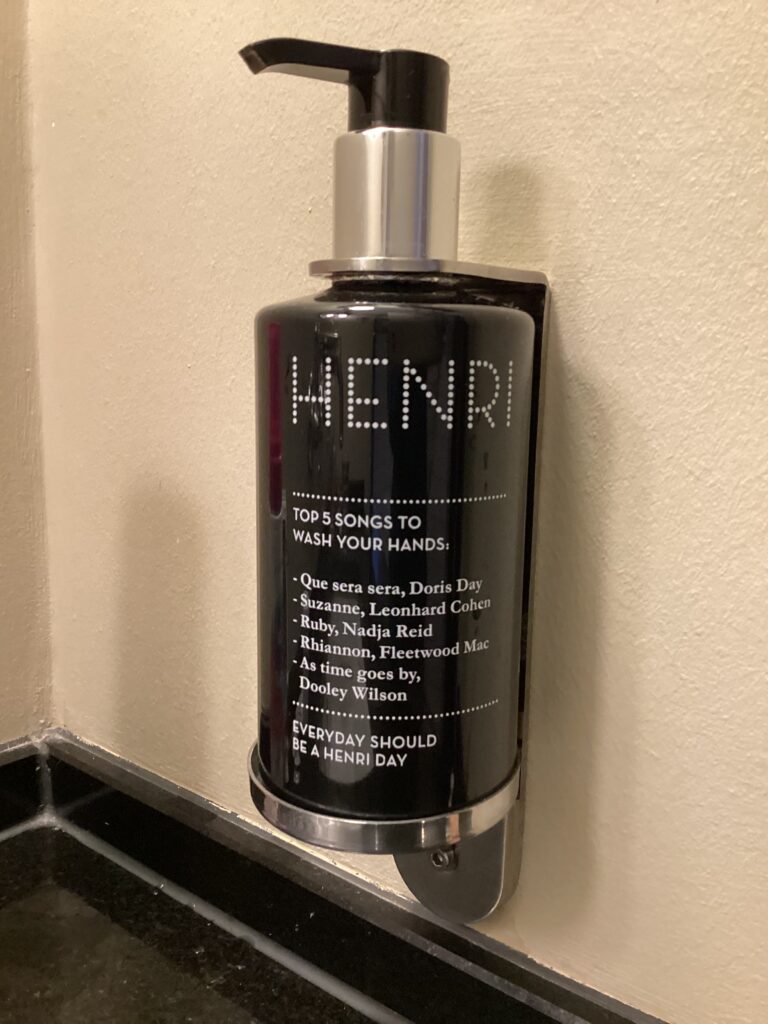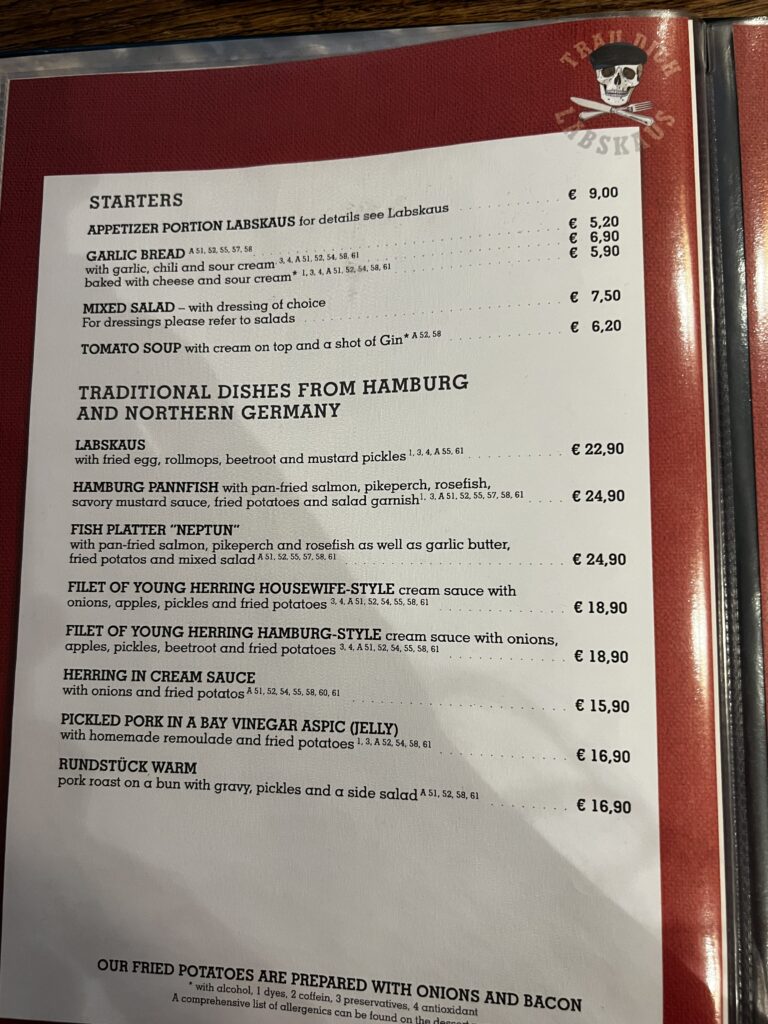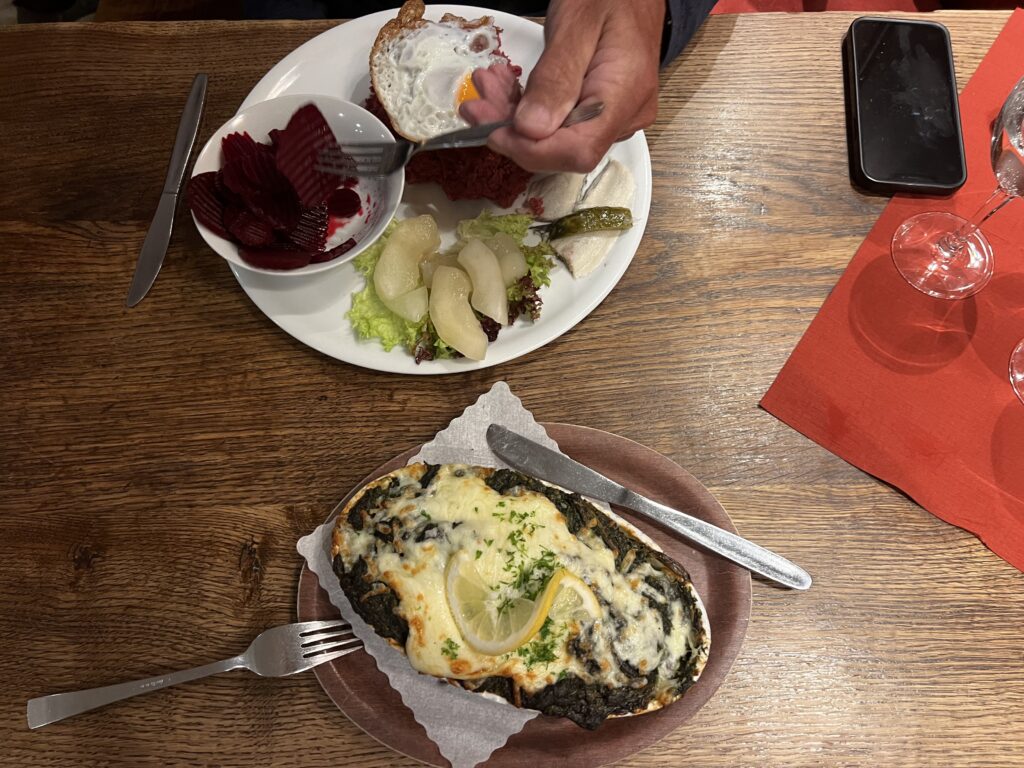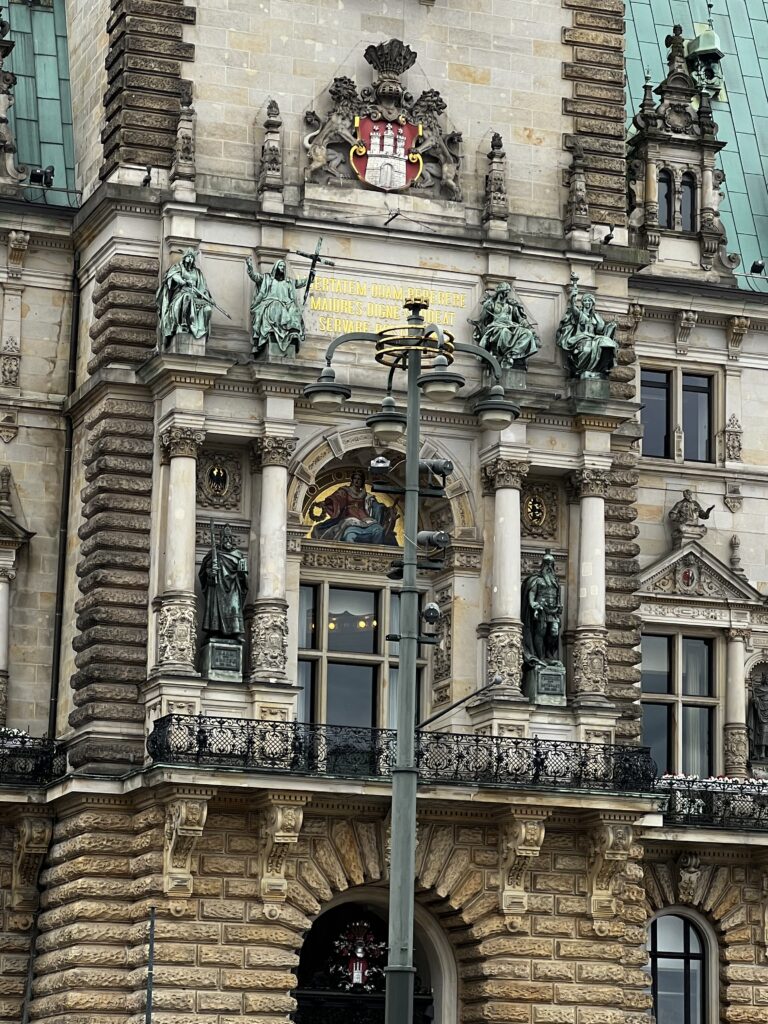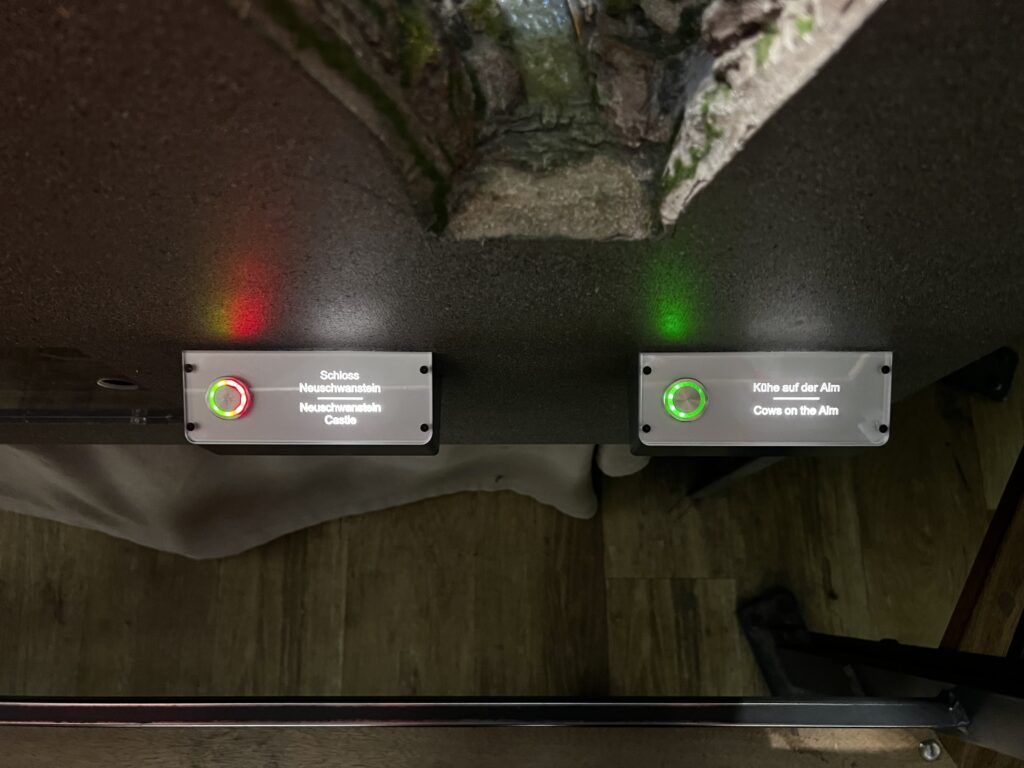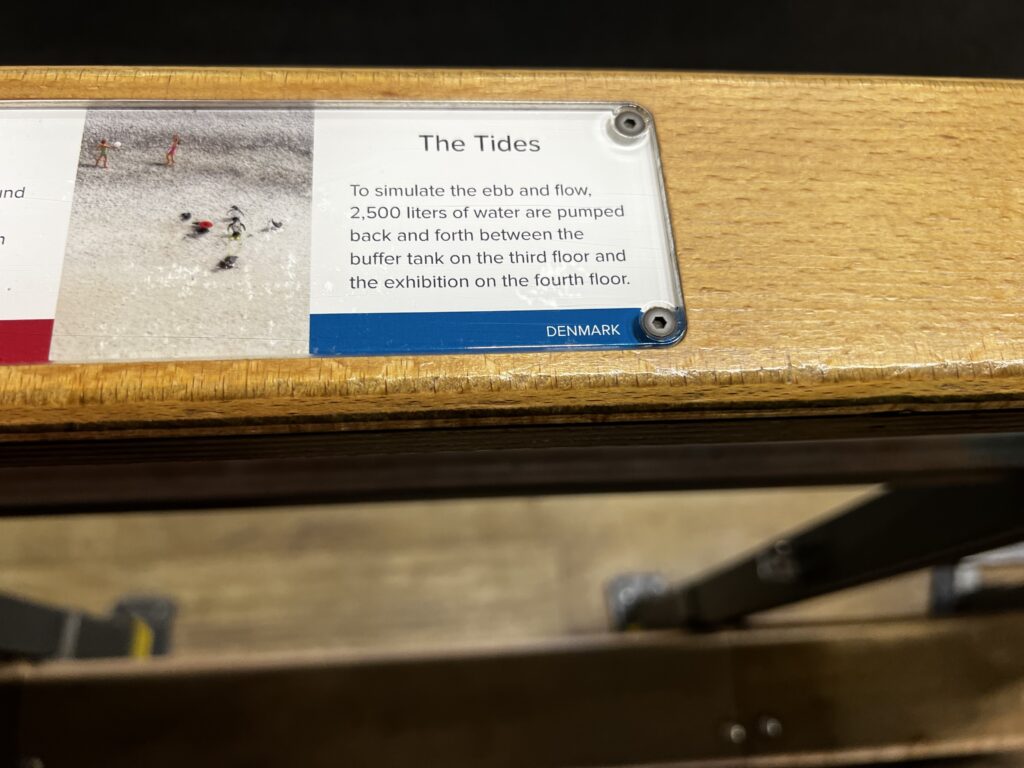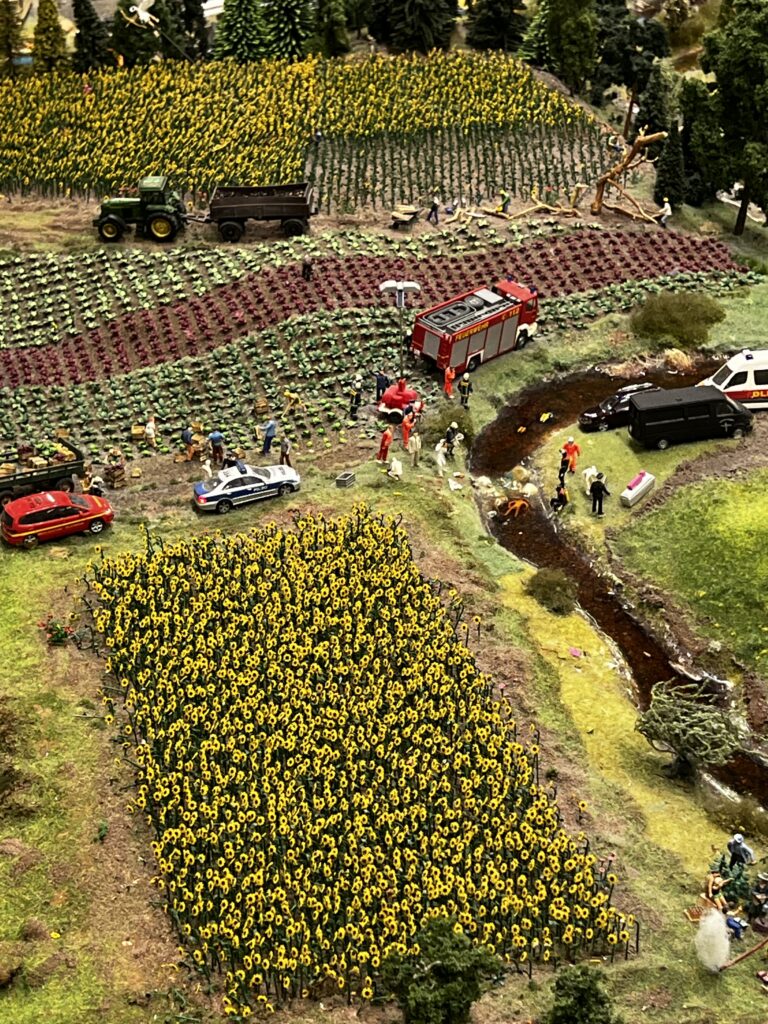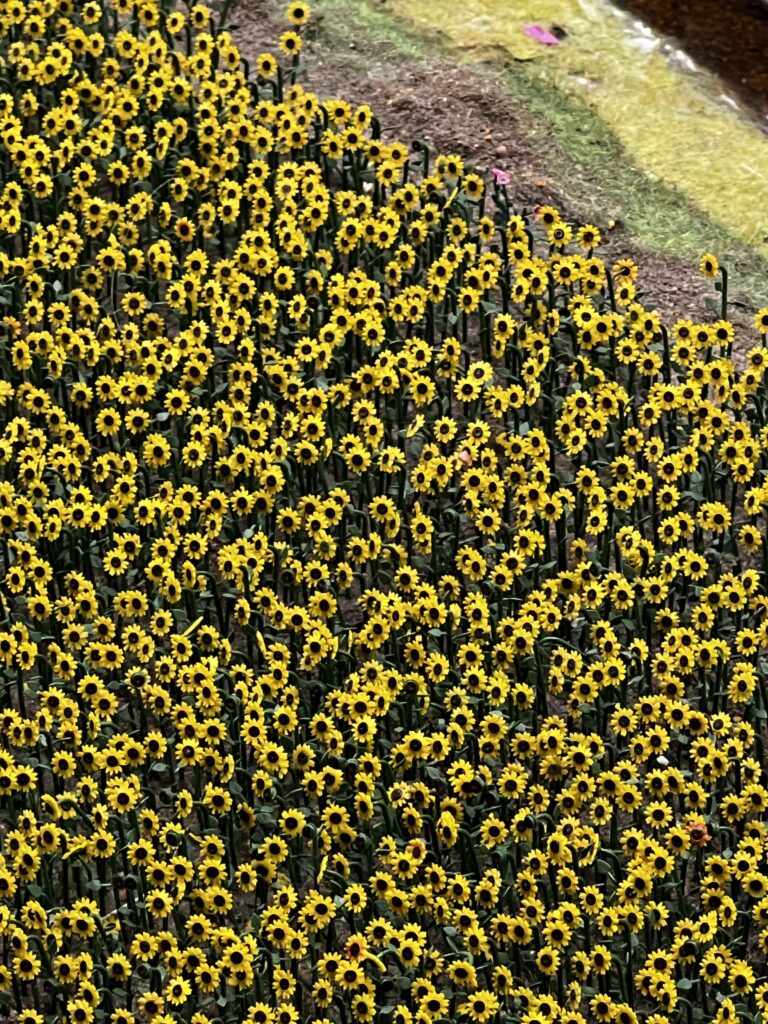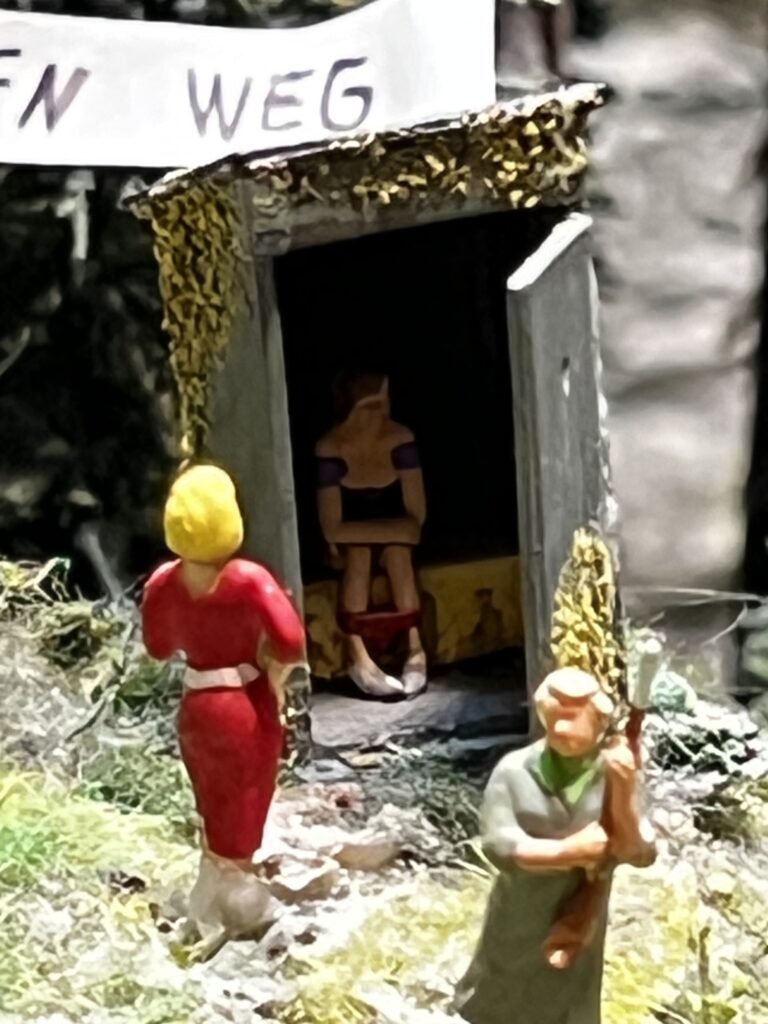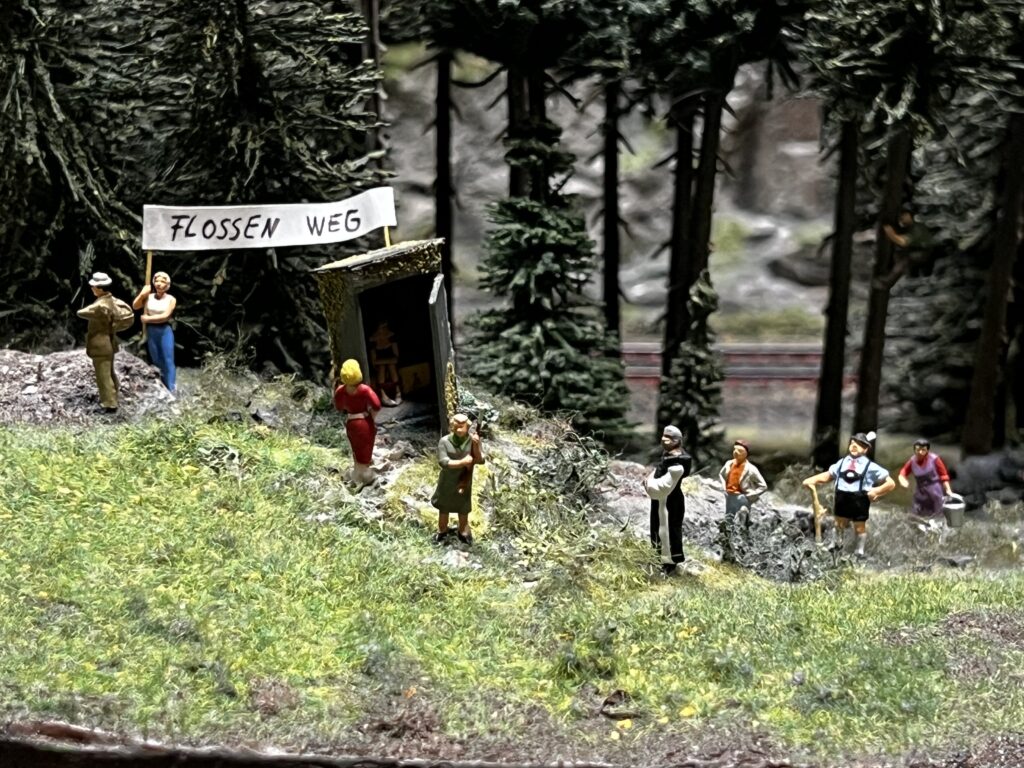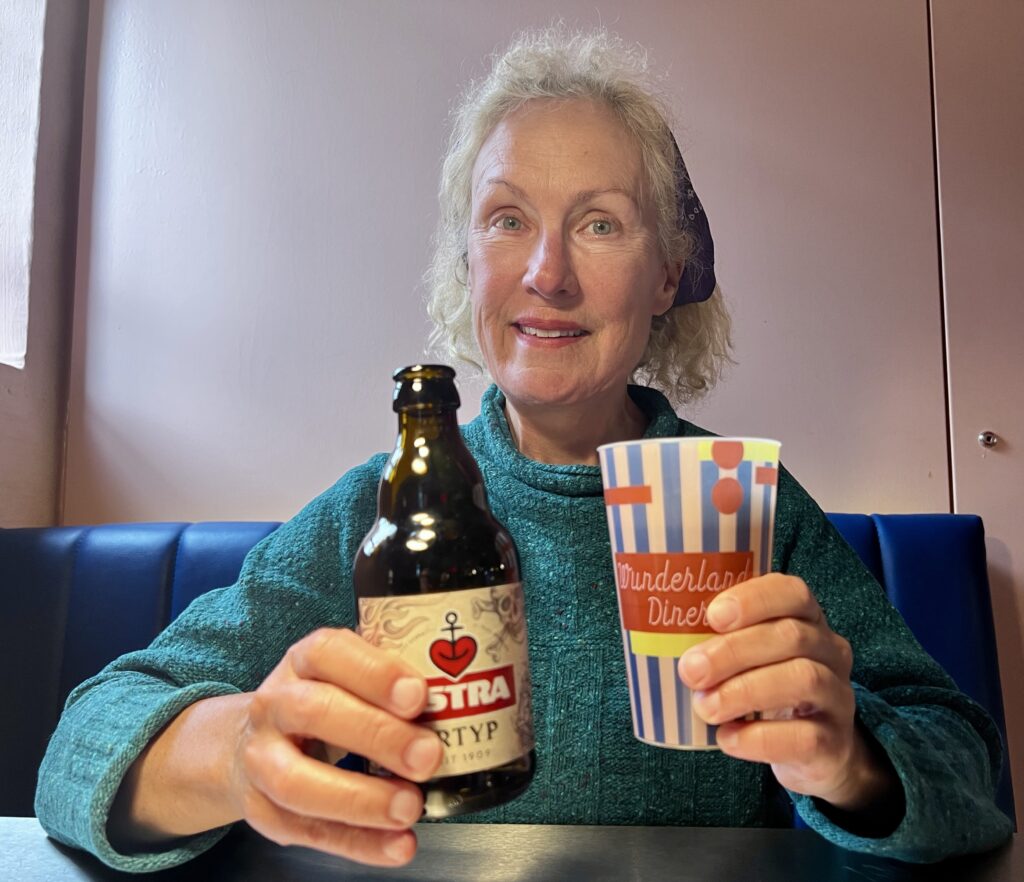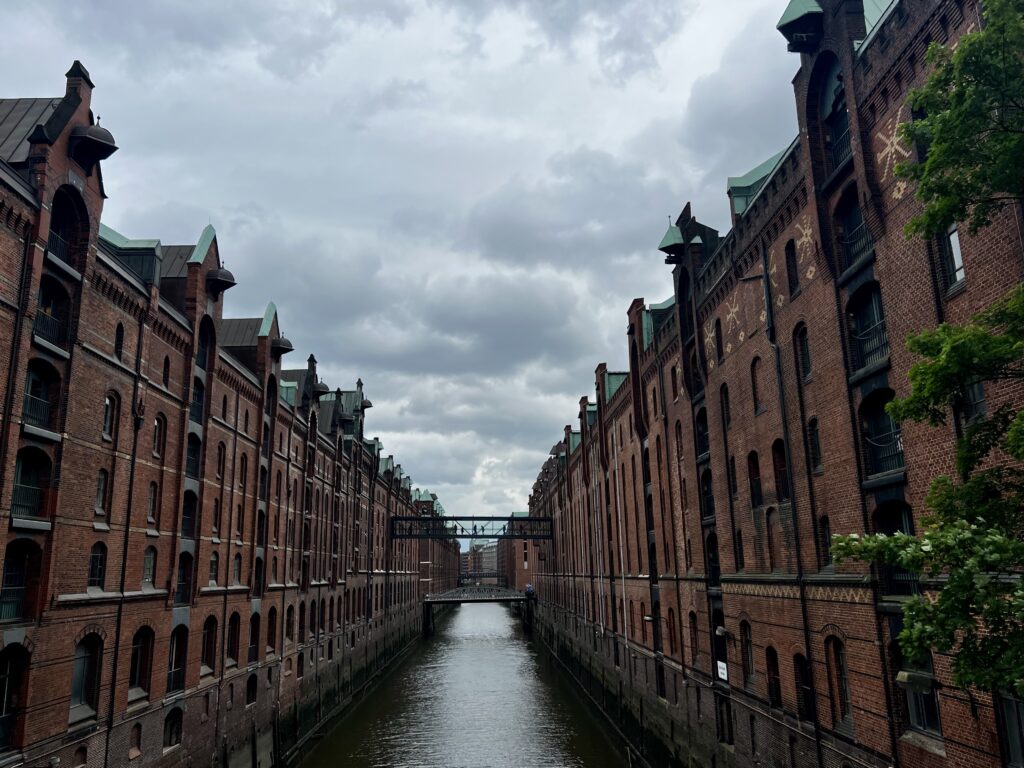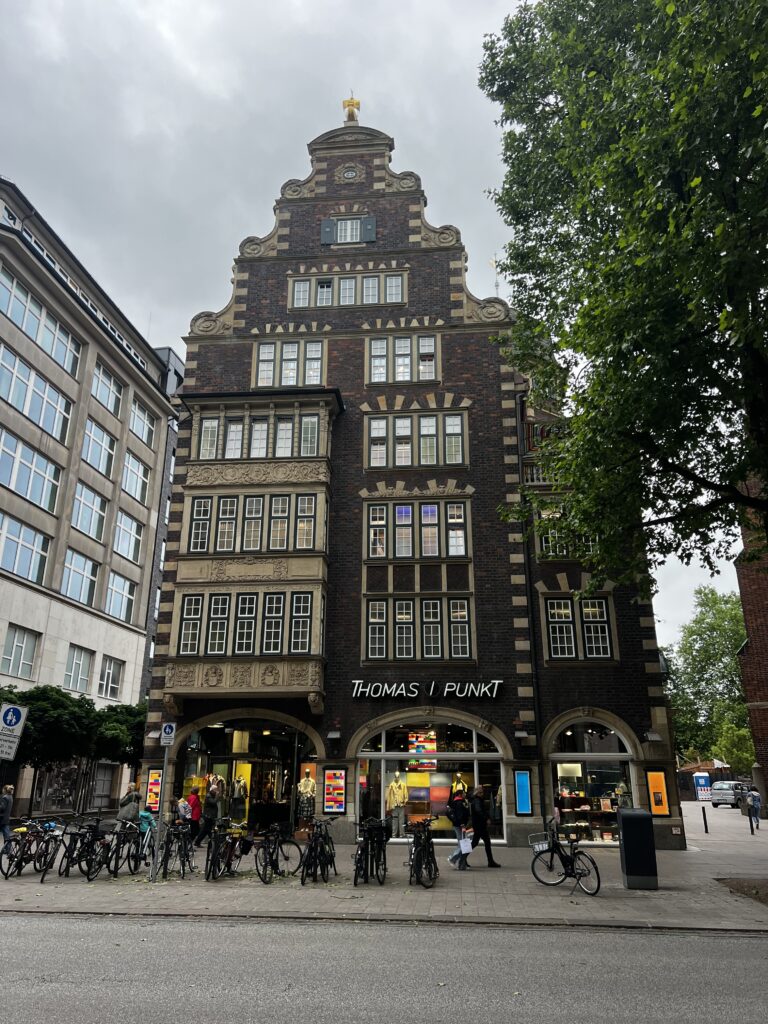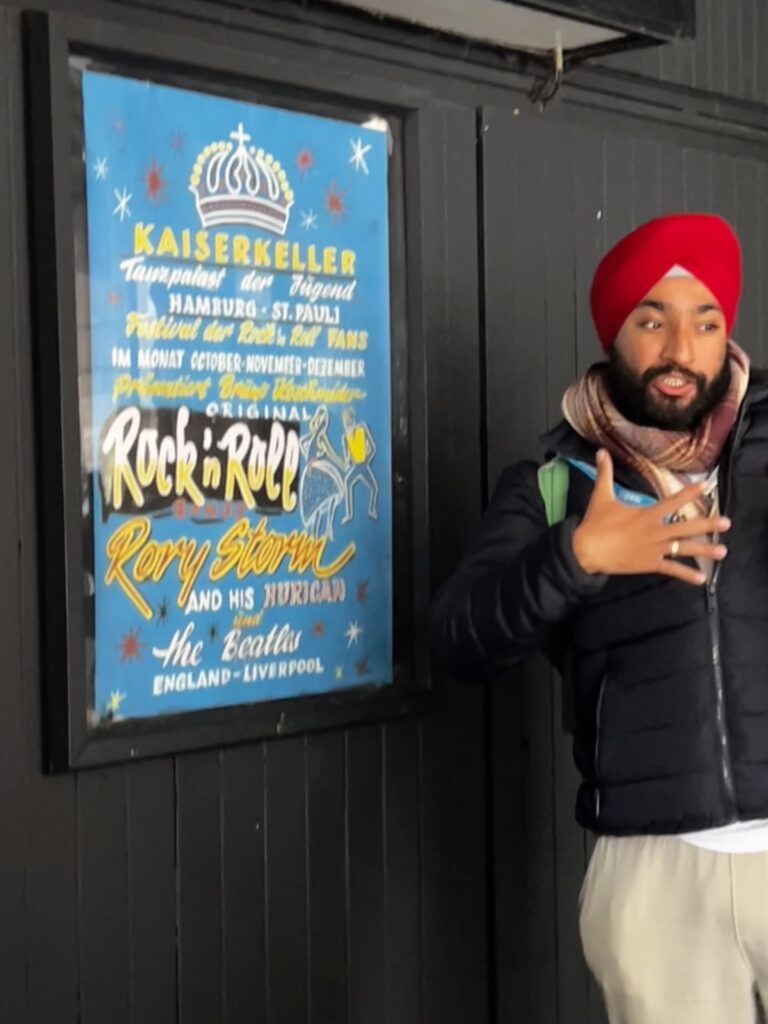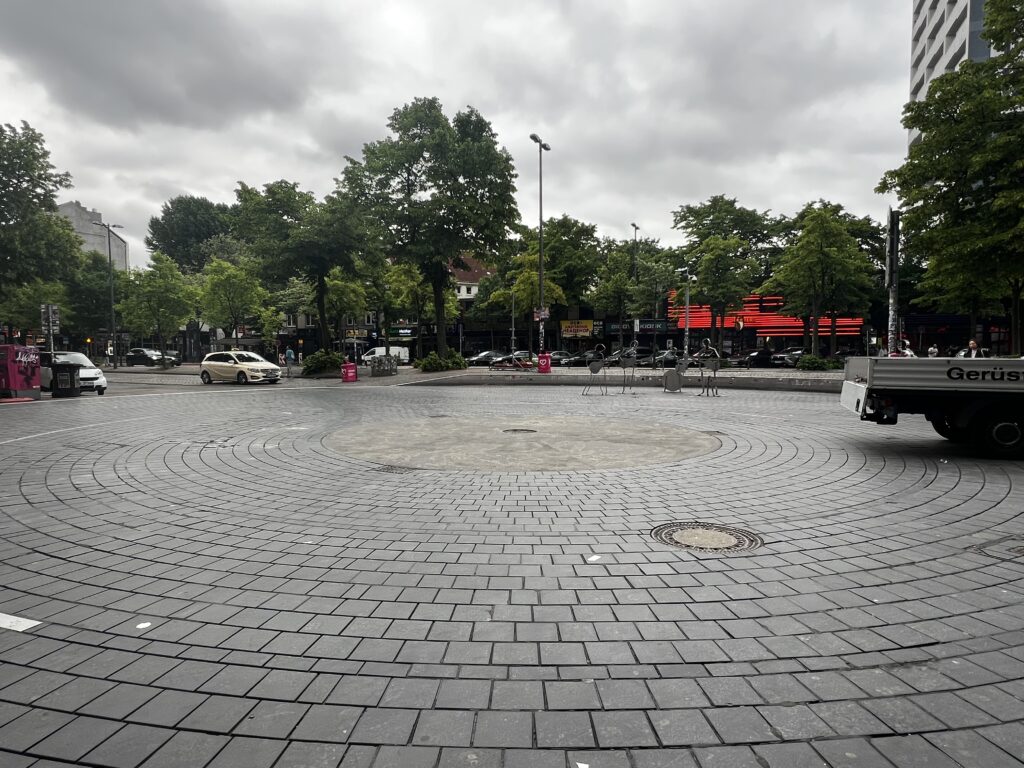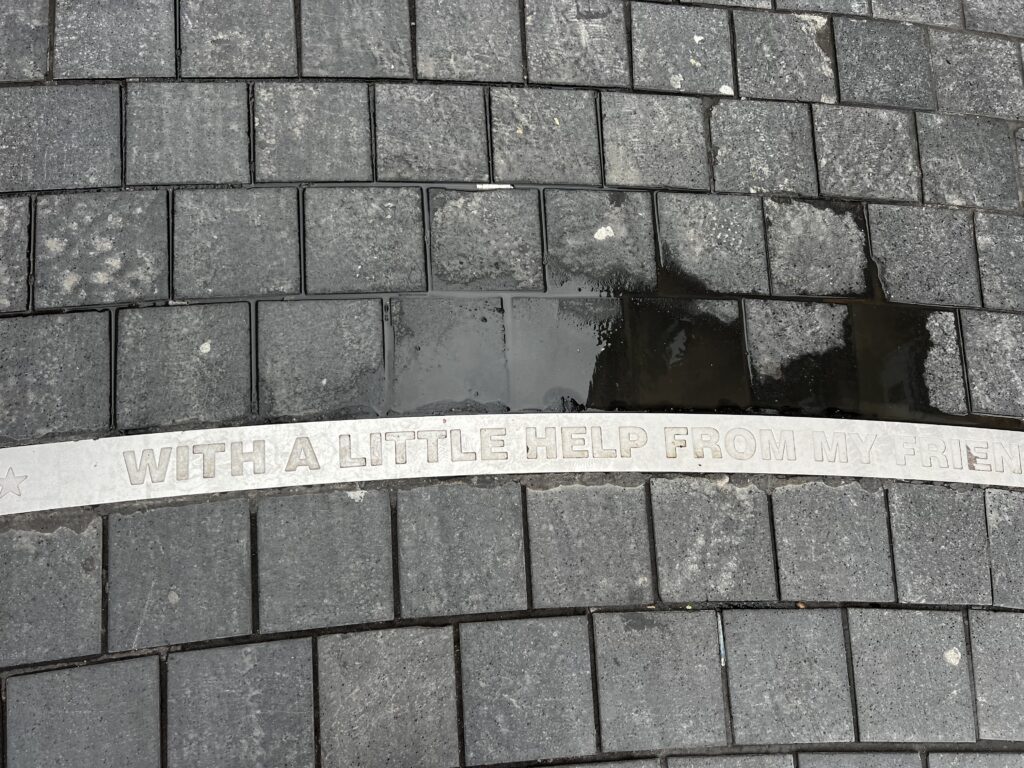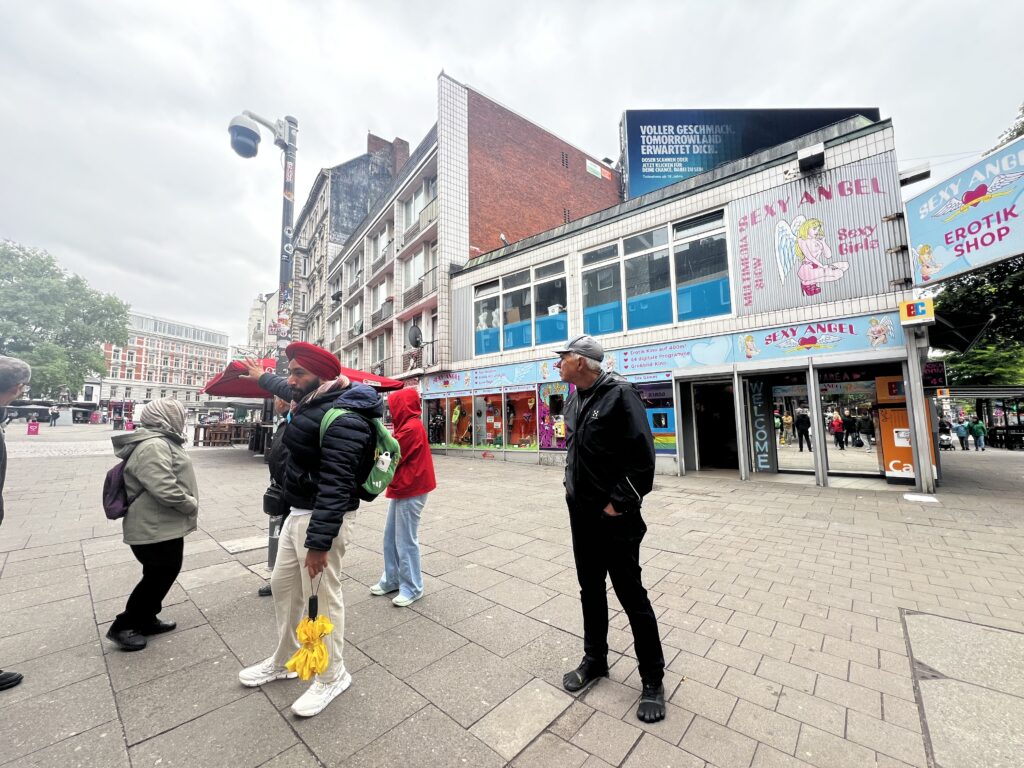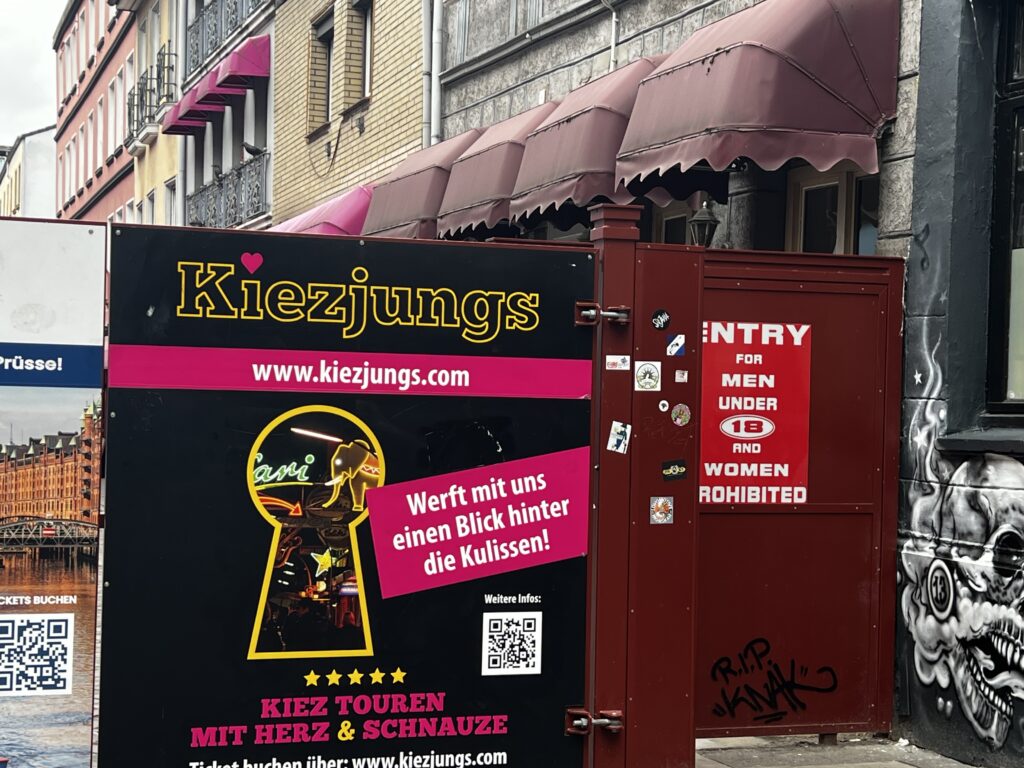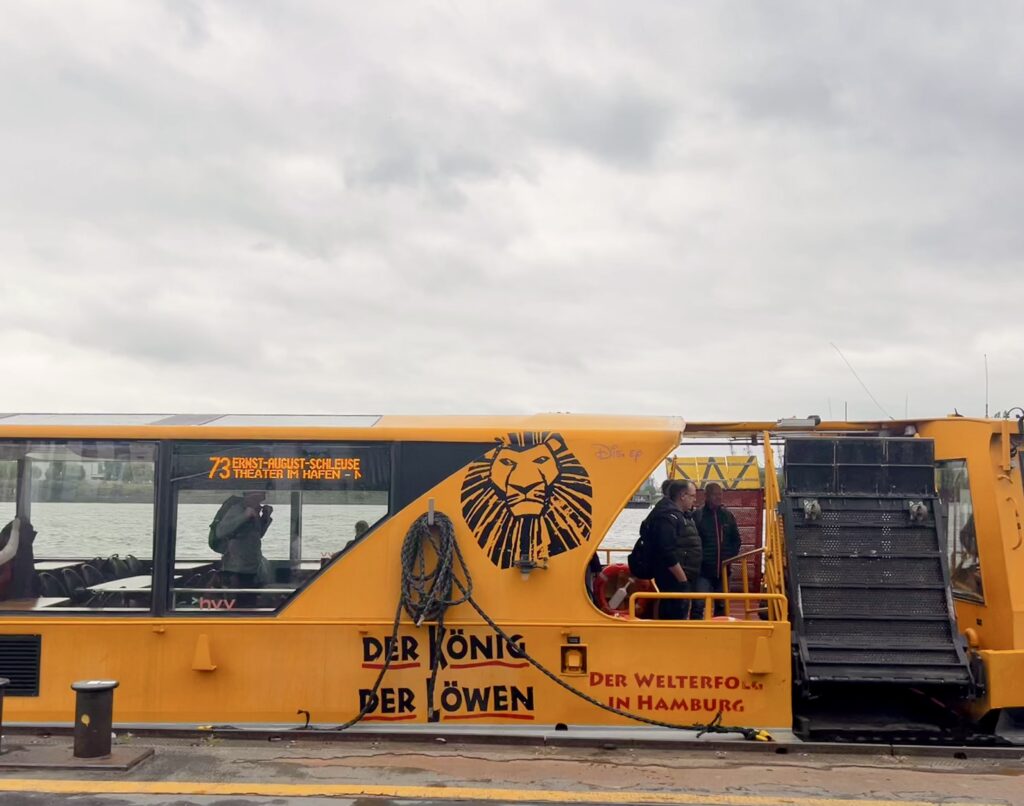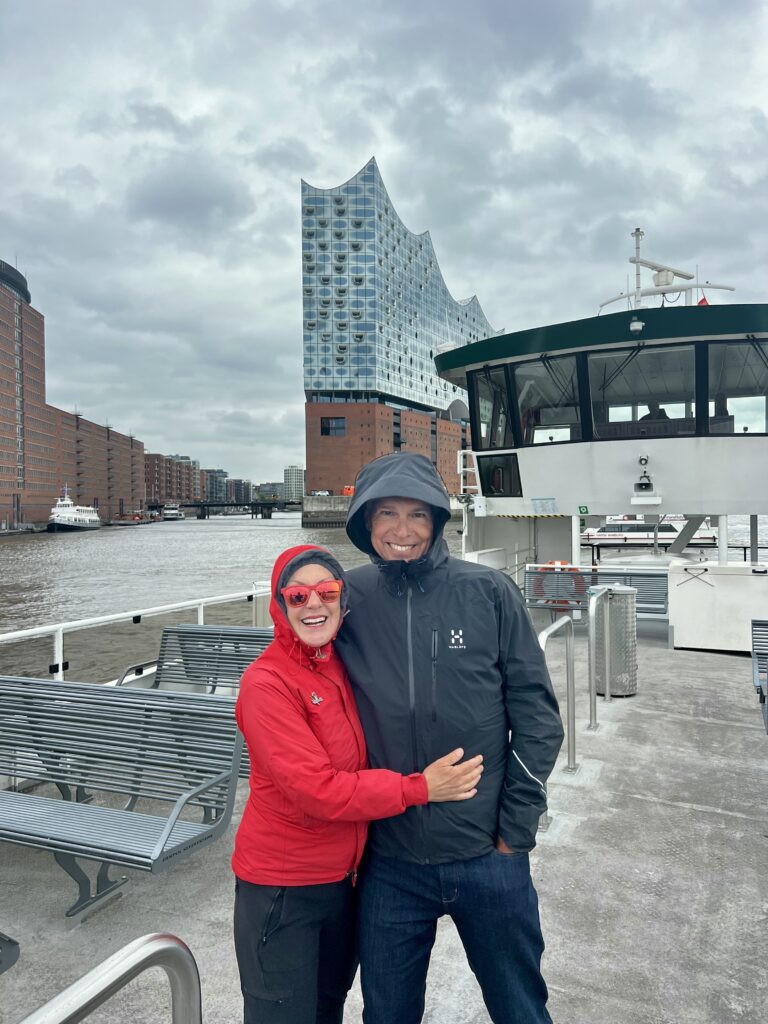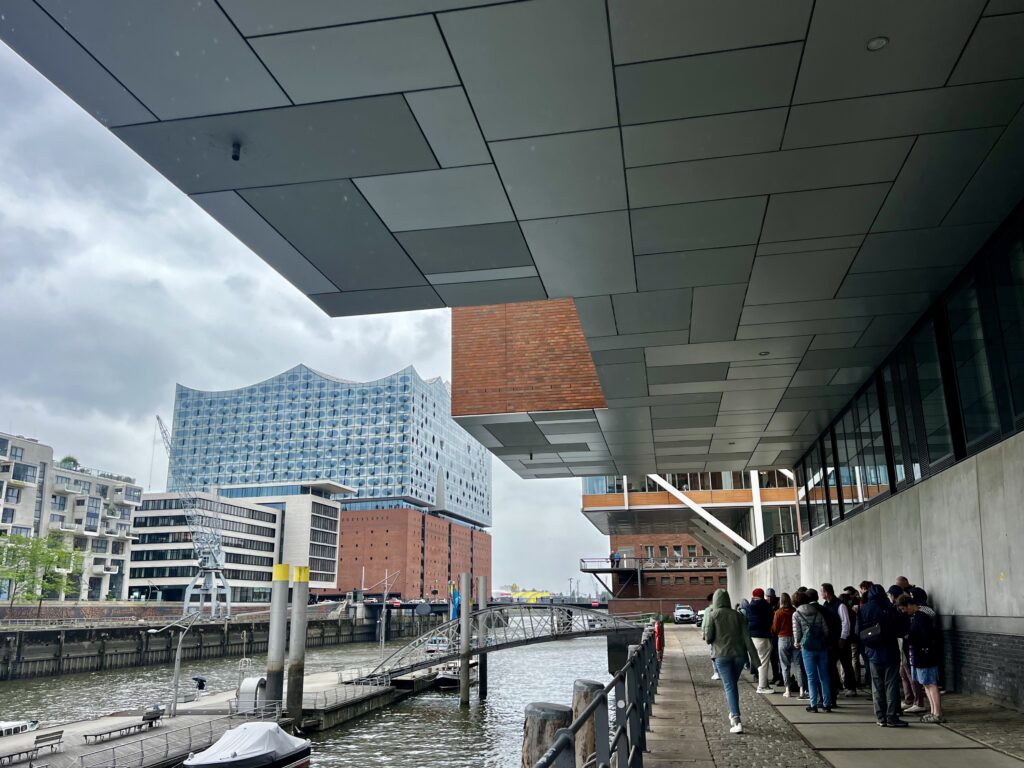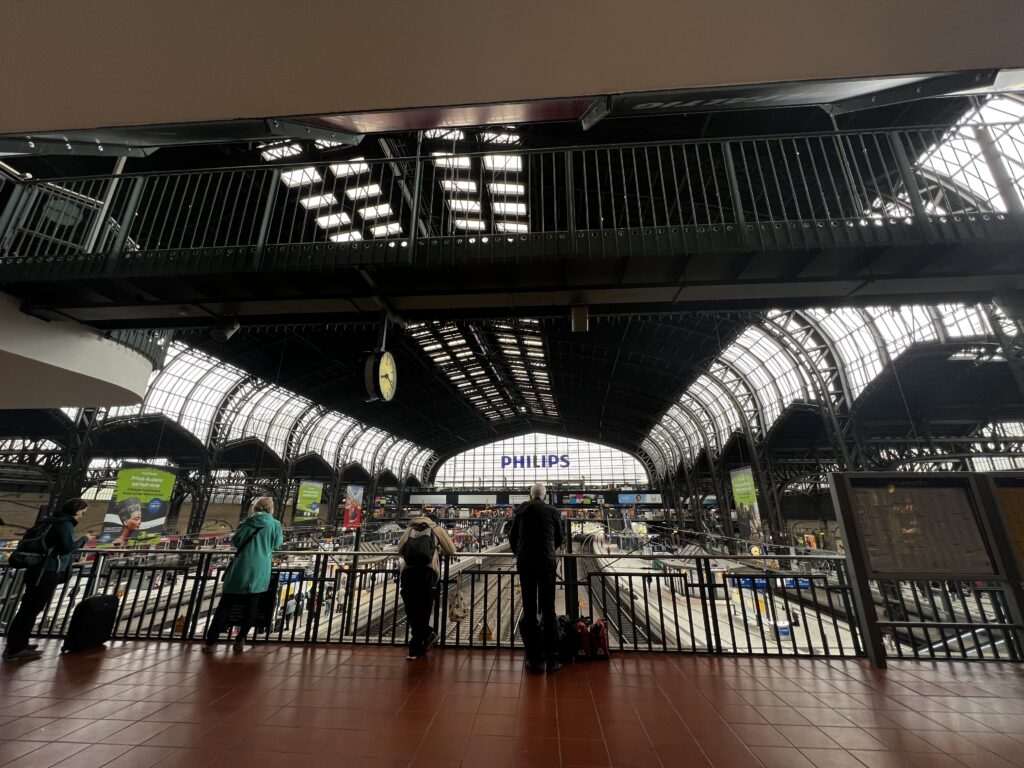This post was written and is being posted on June 6, 2025: the 81st anniversary of D-Day. Hamburg gave us much to think about, especially in regard to war, hatred, children, gratitude and freedom.
Monday morning we packed up our panniers and walked with them from the Amrath Berghotel to the Centraal train station. On the sidewalk in front of the station we found a single sidewalk tile commemorating the life of an Amersfoort citizen who had been murdered in Auschwitz 30-09-1942, Jacob De Hartogh.

As I said in an earlier blog, these tiles are everywhere in Europe; in Germany, where we were headed, we would start encountering the brass tiles called “Stolperstein”, translated literally and metaphorically as “stumbling stones”.
Our train left promptly at 8:35 a.m. and took us to Osnabrück where we made a connection to Hamburg. By 2:00 we were walking our panniers through the German rain to the Henri Hotel Hamburg. By this point I really missed the bikes: they usually carry our luggage for us! Luckily, we pack lightly, and had purposefully left a bunch of bike-related equipment with the bikes in storage.
We dumped our luggage in the room, and set out for the destination that was the real purpose of our stay in this city: Miniatur Wunderland, which is, according to Wikipedia, “the largest model railway system in the world. It is located in the historic Speicherstadt in Hamburg and is one of the most popular and most visited sights in Germany.”
“The exhibition includes around 1,230 digitally controlled trains with more than 12,000 wagons. The Wonderland is also designed with around 5,280 houses and bridges, more than 11,800 vehicles – of which around 350 drive independently on the installation – 52 airplanes and around 290,000 figures. The system features a recurring day-night lighting cycle and almost 500,000 built-in LED lights… As of May 2025, the railway consisted of 16,491 m (54,104 ft) of track in H0 scale with 3,600 switches and 1,400 signals, divided into twelve sections: Harz mountains, the fictitious town of Knuffingen, the Alps and Austria, Hamburg, America, Scandinavia, Switzerland, a replica of Hamburg Airport, Italy, Rio de Janeiro, Patagonia and Monaco/Provence. Planning is also in progress for the construction of sections for Central America and the Caribbean and perhaps Great Britain.”
John had visited this absolutely astounding collection in March of 2019 when he made his first epic model-railroad-plus-trains trip with his friend Ben Pon (a fellow railway aficionado) and he was happy to revisit it and show me what all the fuss is about.
I’ll just say the fuss is warranted, and the collection is so huge that it necessitated a trip to the cafeteria halfway through for a beer (for me) and a burger (for him). Visiting Miniatur Wunderland is by timed ticket, and they are very strict about not allowing visitors in until it is their allotted time. Even so, it was very busy, but people were courteous and curious; trains appeal to people of all ages, it was really wonderful to observe. (And I will never forget the beautiful sound of German children chattering away excitedly to the Oma’s and Opa’s who had brought them to visit Wunderland for the very first time.)
This official 5 minute video gives a very good overview of the Wunderland experience. Have a look!!!
I had done a little research on regional foods (of course) and we were feeling peckish after all of the travel, cold/misty walking and sightseeing, so we made our way to Laufauf for some German comfort food: labskaus (“a traditional German dish, particularly popular in Northern Germany, especially in Hamburg. It’s a hearty one-dish meal made from mashed potatoes, corned beef and red beets, and is often served with a fried egg, pickles, and rollmops – pickled herring”).
Tuesday morning we had the first of our Henri Hotel breakfasts. I was in heaven: proteins and seedy-nutty German breads. Liverwurst. Cheese. Ham. Real eggs. Killer coffee. And a cereals muesli counter for John. We love love loved this hotel and would stay in any of their other hotels in a Hamburg Minute. HIGHLY RECOMMENDED. The weather was still cool and misty but we weren’t going to complain: we had had a month (minus one day) of cycling in splendid weather.
We had two group tours booked for this day – an “Old Town Tour” and an “Alternative Side Tour“. Both of them were fantastic, with “Savvy” of Walkative Tours. HIGHLY RECOMMENDED. The company’s premise is interesting: the tour is “free”, and you decide at the end of the tour if you want to “tip” or not tip. The guide has to split the net payment from the number of guests into three: 1/3 for the city tax, 1/3 to “Walkative” for their administrative/promotional expense, and 1/3 to him/her-self. “Savvy” had his Masters in International relations, had been guiding for 11 years, and completely blew us out of the water with his energy and passion for the city, coupled with a deep knowledge of Hamburg’s history, architecture, sociology, and cultural importance. I’m only waxing poetic about this experience because three days later in Copenhagen we had a completely pathetic experience on a private tour with a guide whose knowledge was so shallow, so untrained, so…. well, it was not good. (But we weren’t going to complain, we had had a month of excellent guides. One dud out of the bunch isn’t bad.)
The morning tour included Rathaus(Townhall), Alster Lake, St.Nikolai Church, Deichstraße, Speicherstadt, St. Michael’s Church, HafenCity, Elbphilharmonie – the ten year old concert hall whose roof resembles the waves of the North Sea. Sadly, their concerts were sold out, in fact they’re almost always sold out, so we didn’t get to see the inside of the concert hall.
On the tours we managed to find some sites my parents had visited during their travels in the 1950s, so, again, we replicated those photographs. This is my dad, enjoying a bratwurst by the entrance to the Elbe Tunnel. He’s wearing his helmet, so I guess he and my mum were still on the scooter they had purchased in Penrith, UK. That’s at least 900 miles. Kudos, Mum and Dad.
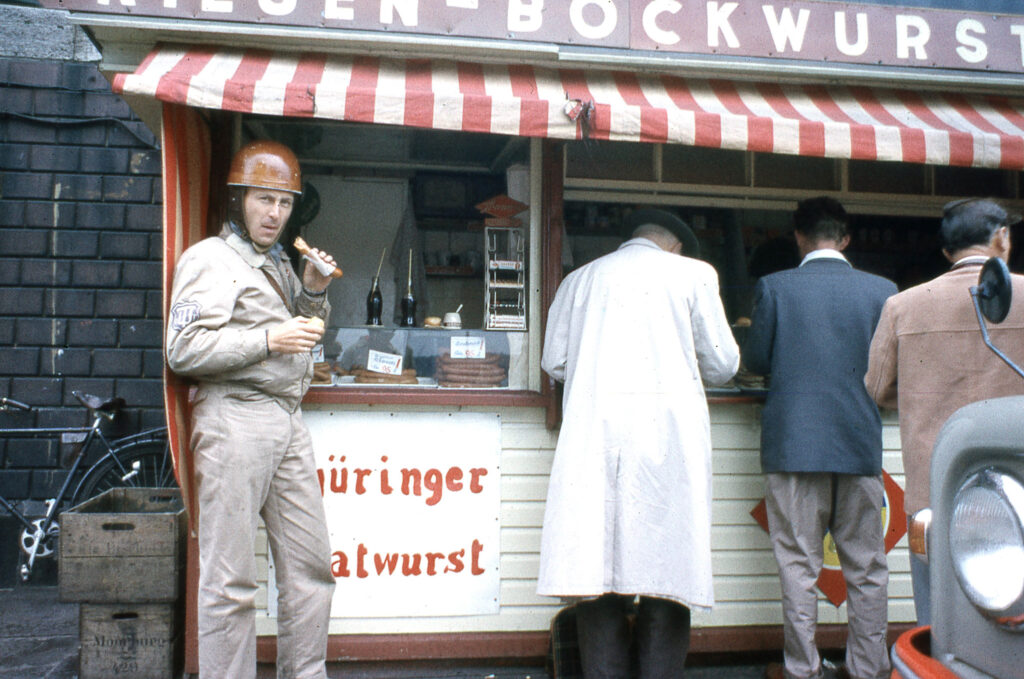
RE-creating my parents’ photos isn’t a mission or anything, it’s just an interesting challenge for John and me, and it’s thought-provoking. What has changed since the post-war ’50s? What is the same? Why? What did it feel like to be in Hamburg not so long after WWII? What was it like for a couple of kids from the farm to visit these big cities?
Hamburg Rathaus (City Hall), circa 1957, photo by Jack Paddle.

Hamburg Rathaus, photo by John Loach, May 2025.

Surprising fact: Hamburg is the third largest Musical Theatre city in the world after NYC and London. Lion King has its own building and a ferry to get you there. (See photos. The theatre beside the Lion King Theatre had just finished a run of Frozen, or, as they like to call it in German, Die Eiskonigin. Hamburg has a massive harbour, shipping is a huge industry, and there are also boatyards where ships (and Russian oligarchs’ yachts) are repaired.
The afternoon tour included the harbour, the backstreets of St. Pauli, the red light district (including the street where only men over 18 years old are allowed, and definitely no women – see photo), the historic tunnel (my parents had visited there! see photo), and the legendary music clubs where the Beatles had their start. It was gritty, and a real contrast to what we had seen in the morning. I’m so glad we had both tours.
The Elbe Tunnel entrance circa 1957. Photo by Jack Paddle. Cars were still using the tunnel, the walls were black with grime.
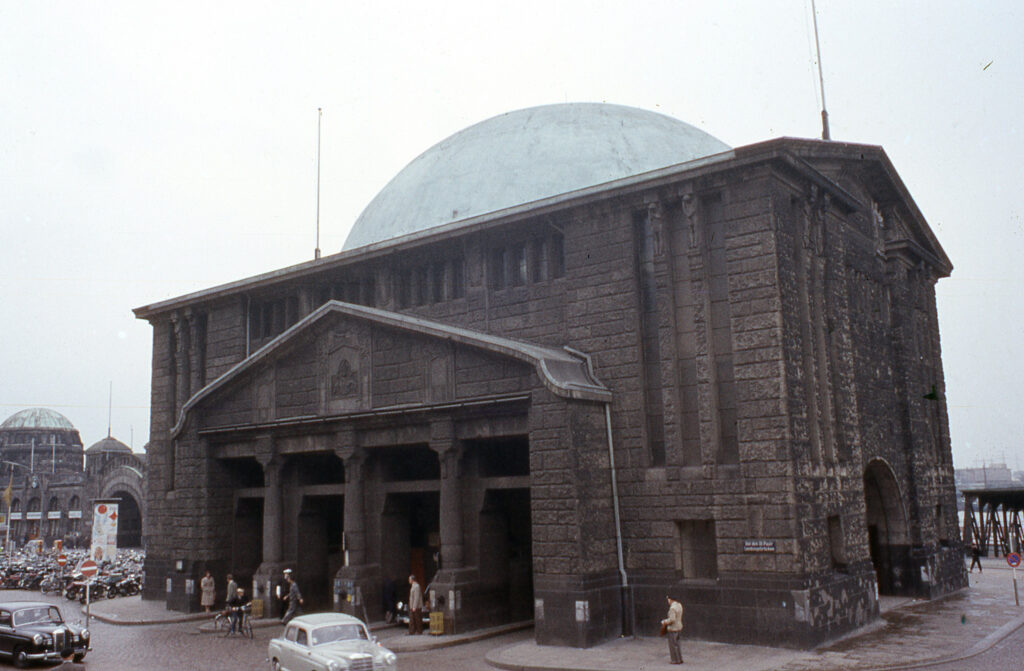
The Elbe Tunnel entrance, May 2025. Photo by John Loach. Cars are no longer allowed, just bikes and people. It’s almost all cleaned up and it’s sparkling inside.
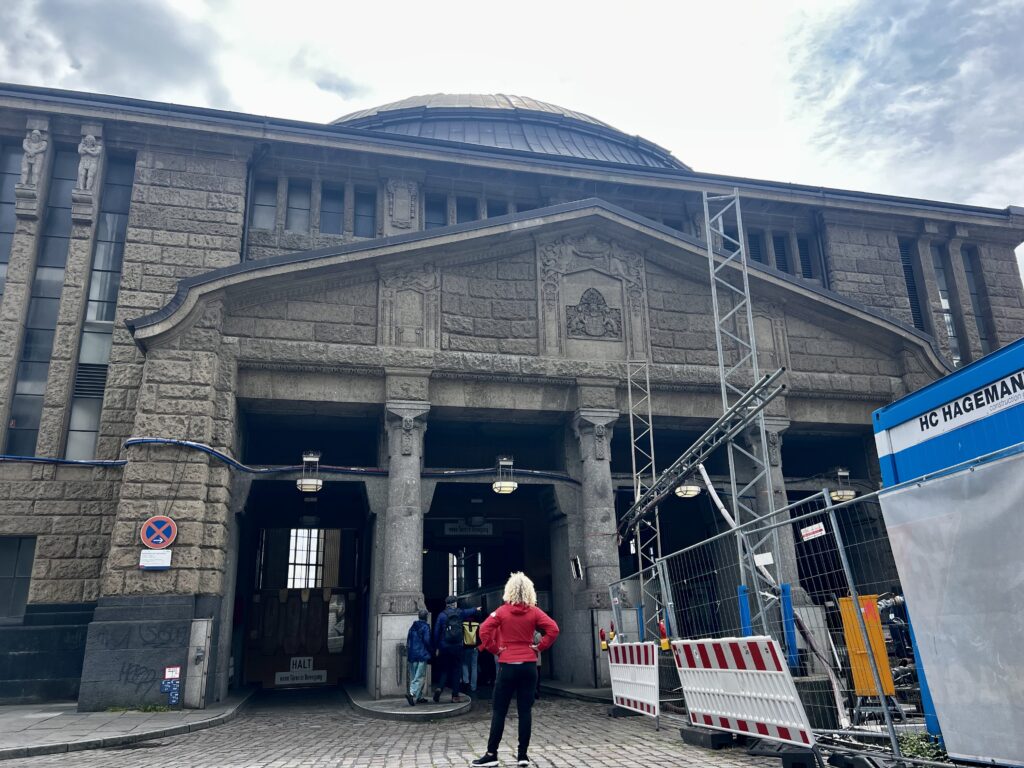
Shiny sparkly tunnel interior!
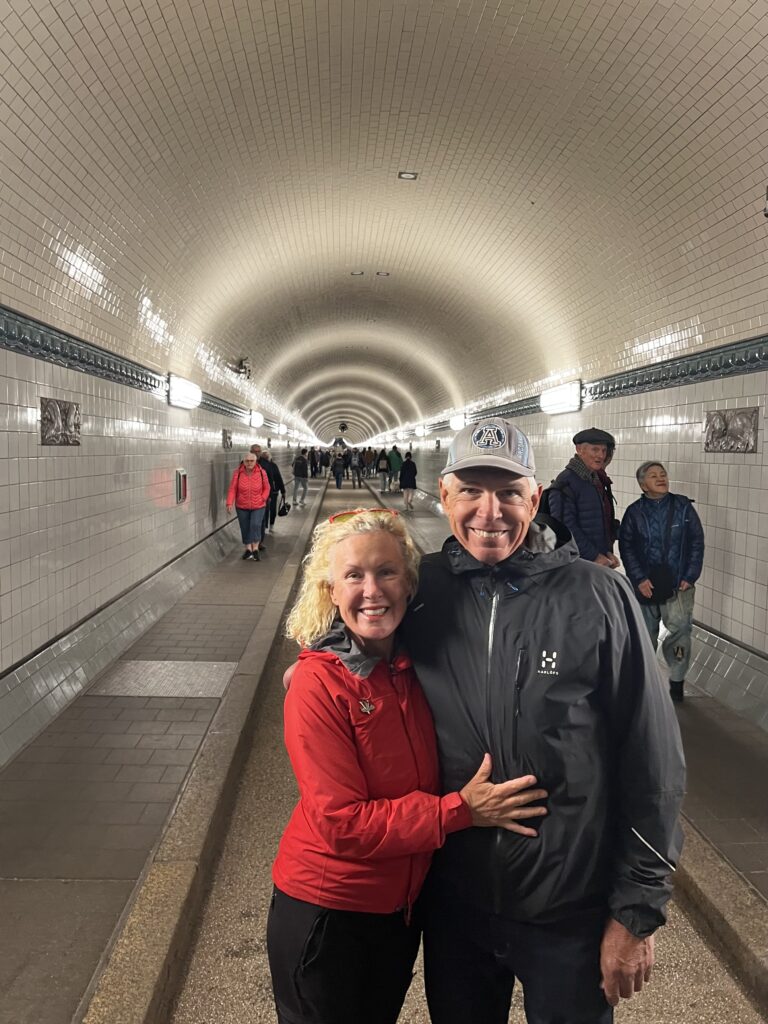
We found some Stolpersteines, these ones were brass plates inscribed with the names and dates of victims of Nazi persecution, placed in the pavement outside their last voluntarily chosen residences.
Stolperstein are a project by German artist Gunter Demnig. The stones bear brass plates with the victim’s name, date of birth, and a brief description of their fate (e.g., deportation, exile, murder). The victims include Jews, Sinti and Roma; politically persecuted people; homosexuals; Jehovah’s Witnesses and euthanasia victims under National Socialism. There are now over 70,000 Stolpersteine laid in over 1,200 cities and towns across Europe, Russia and the US. The project aims to bring the individual stories of Holocaust victims into everyday life, making the tragedy more tangible and personal. Anyone can request a Stolperstein for a victim, and the project is driven by grassroots initiatives, local associations, schools, and other organizations. The cost of installing a Stolperstein is typically 120 euros, with those requesting the installation performing the research and paying for it.
In the case of Doctor Charlotte Friedman (see photo), she didn’t end up being murdered at one of the concentration camps: the loss of her position as a doctor (Jews were not allowed to act as doctors in Nazi Germany except in Jewish Hospitals) weighed heavily on her. She became mentally ill, was hospitalized several times and on February 24, 1939, she took her own life by jumping from the roof of the Israelite Hospital on Simon-von-Utrecht-Straße. Another victim.

Hamburg: a city that was scarred by the bombing in WWII, it has risen above the ashes with a healthy cultural life and economy. And the next day, we were off to Copenhagen, our final stop on this Spring 2025 trip.
Nikolai Church ruins, circa 1957. Photo by Jack Paddle.
“The bombing of Hamburg in World War II destroyed the bulk of the church. The removal of the rubble left only its crypt, its site and tall-spired tower, largely hollow save for a large set of bells. These ruins continue to serve as a memorial and an important architectural landmark.” (Wikipedia.)

“The clearly visible tower of the Church of St. Nicholas served as a goal and orientation marker for pilots of the Allied Air Forces during the extensive air raids on Hamburg. On 28 July 1943, the church was heavily damaged by aerial bombs. The roof collapsed and the interior of the nave suffered heavy damage. The walls began to show cracks, yet neither they nor the tower collapsed.” (Wikipedia.)
The tower and some remains of the wall have since been preserved as a memorial against war.
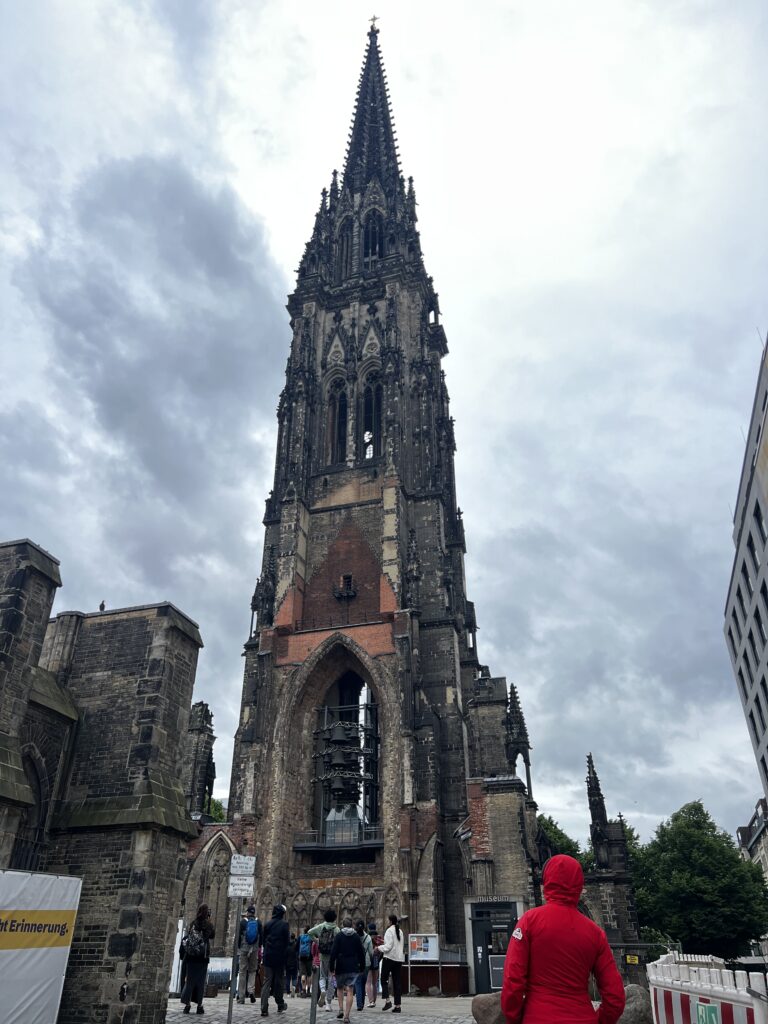
Thank-you, Hamburg, you gave us a lot to think about.

